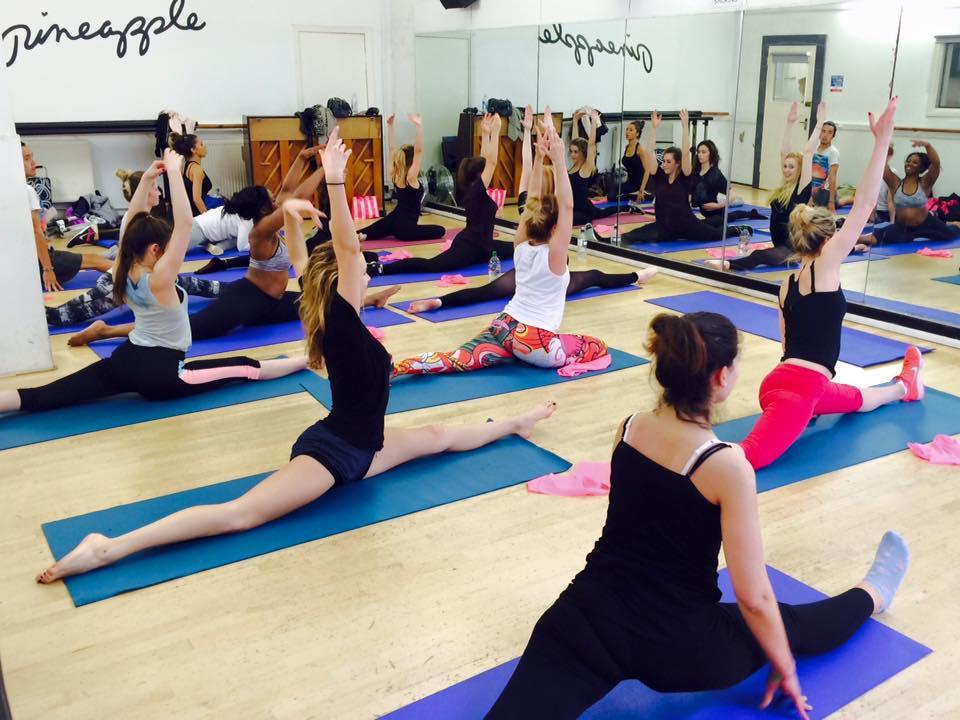
Fresh for February from Ali T: Follow these Flexi tips to improve your flexibility!
There are 2 main types of stretching:
dynamic &
static.
Dynamic stretching – Dance yourself Flexi
As the name implies, dynamic stretching involves movement. Dynamic stretching helps to prepare the body for a flexi session by increasing the flow of blood and oxygen to the muscles, warming up the muscles and mobilising the joints.
Start with a warm up for 5-10 minutes then dynamically stretch to increase the elasticity of the tissues. Keep the stretches smooth and controlled to avoid straining the muscles.
The stretches should be held for between 3-10 seconds each. For example, front-to-back leg swings, knee-hugs, butt kicks, hand-walks, arm swings, walking lunges, etc.
 Static stretching – Strike a stretch
Static stretching – Strike a stretch
Once fully warmed up and dynamically stretched, it's time to strike a static stretch!
Research continually demonstrates that static stretching is most beneficial for increasing flexibility after your workout when your muscles are warm and pliable.
Hold a static stretch for atleast 30 seconds to increase flexiness. Gradually lengthen the muscle, breathe deeply and allow your muscles to relax into a deeper stretch over time.
These stretches may feel slightly uncomfortable, which is fine, as long as they don’t feel painful.
Grab a resistance band or a flexi friend to help ease you into the stretch. Some examples of static stretches are: reaching to touch your toes or a straddle stretch with your legs out wide, etc.

Stick on your favourite tunes and treat your body to a flexi session to feel energised & supple!!
Catch a Fit&Flexi class every Monday 12-1pm & 8-9pm at Pineapple!
Ali T is a qualified Personal Trainer and Fitness Instructor with a degree in Biology.
Fit&Flexi classes during the week at
Pineapple Dance Studios.

 Static stretching – Strike a stretch
Once fully warmed up and dynamically stretched, it's time to strike a static stretch!
Research continually demonstrates that static stretching is most beneficial for increasing flexibility after your workout when your muscles are warm and pliable.
Hold a static stretch for atleast 30 seconds to increase flexiness. Gradually lengthen the muscle, breathe deeply and allow your muscles to relax into a deeper stretch over time.
These stretches may feel slightly uncomfortable, which is fine, as long as they don’t feel painful.
Grab a resistance band or a flexi friend to help ease you into the stretch. Some examples of static stretches are: reaching to touch your toes or a straddle stretch with your legs out wide, etc.
Static stretching – Strike a stretch
Once fully warmed up and dynamically stretched, it's time to strike a static stretch!
Research continually demonstrates that static stretching is most beneficial for increasing flexibility after your workout when your muscles are warm and pliable.
Hold a static stretch for atleast 30 seconds to increase flexiness. Gradually lengthen the muscle, breathe deeply and allow your muscles to relax into a deeper stretch over time.
These stretches may feel slightly uncomfortable, which is fine, as long as they don’t feel painful.
Grab a resistance band or a flexi friend to help ease you into the stretch. Some examples of static stretches are: reaching to touch your toes or a straddle stretch with your legs out wide, etc.
 Stick on your favourite tunes and treat your body to a flexi session to feel energised & supple!!
Catch a Fit&Flexi class every Monday 12-1pm & 8-9pm at Pineapple!
Ali T is a qualified Personal Trainer and Fitness Instructor with a degree in Biology.
Fit&Flexi classes during the week at Pineapple Dance Studios.
Stick on your favourite tunes and treat your body to a flexi session to feel energised & supple!!
Catch a Fit&Flexi class every Monday 12-1pm & 8-9pm at Pineapple!
Ali T is a qualified Personal Trainer and Fitness Instructor with a degree in Biology.
Fit&Flexi classes during the week at Pineapple Dance Studios.